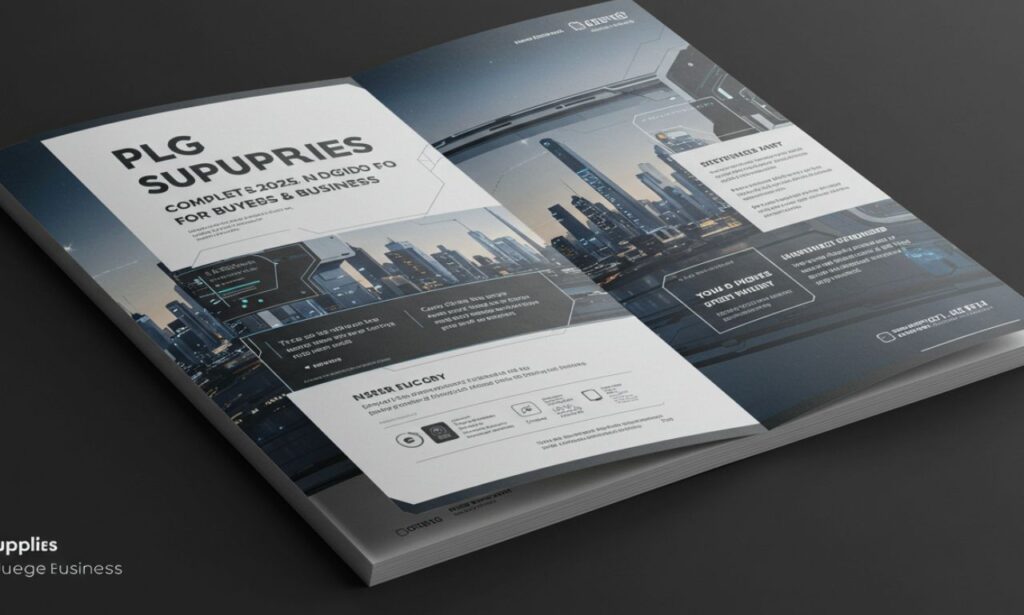In 2025, PLG supplies have become an important part of procurement, construction, and manufacturing sectors. Whether you’re a business owner, contractor, or supply chain manager, understanding what PLG supplies are, where to source them, and how to manage their cost is crucial. This article explores everything you need to know about PLG supplies — from industry trends and best practices to challenges and innovations shaping the market.
PLG Supplies: What They Are and Why They Matter
At its core, PLG supplies refer to a wide range of parts, logistics materials, and general supplies used in industrial operations, construction, and distribution networks. The acronym PLG is commonly associated with Parts, Logistics, and General supplies, which makes it a flexible term used across industries.
Businesses rely on PLG supplies for:
-
Day-to-day operations (packaging, tools, components)
-
Maintenance and repair (spare parts, replacement units)
-
Project-specific needs (bulk material orders for construction)
With globalization and e-commerce driving higher demand for efficient supply chains, PLG are becoming a critical area for cost control and process optimization.
PLG Supplies: Key Categories
PLG Supplies for Manufacturing
Manufacturing plants depend on PLG for machine parts, lubricants, fasteners, and packaging. Ensuring consistent availability is vital for avoiding production downtime.
PLG Supplies for Construction
Construction projects use PLG such as safety gear, tools, cement mixes, electrical wiring, and plumbing fittings. Bulk sourcing strategies can reduce per-unit costs.
PLG Supplies for Logistics and Distribution
In the logistics sector, PLG include pallets, shrink wraps, crates, barcoding labels, and warehouse equipment. Having the right supplies ensures smooth goods movement and reduces shipment errors.
PLG Supplies: Latest Market Trends in 2025
The PLG supplies industry is undergoing transformation driven by technology and sustainability concerns. Here are the most significant trends:
-
Digital Procurement Platforms: Businesses increasingly use online platforms and AI-powered tools to source PLG, ensuring competitive pricing and real-time availability.
-
Green and Recyclable Materials: Companies are shifting to eco-friendly supplies like biodegradable packaging and recyclable pallets to meet ESG targets.
-
Automation-Driven Demand: As warehouses and factories adopt robotics, the type of PLG needed is changing — more sensors, smart packaging, and machine-compatible components.
-
Supply Chain Risk Mitigation: Organizations are diversifying suppliers to avoid disruptions caused by geopolitical conflicts, shipping delays, or raw material shortages.
PLG Supplies: Benefits of Optimized Procurement
When businesses properly manage PLG , they experience multiple advantages:
-
Cost Savings: Bulk purchasing and supplier contracts lower overall costs.
-
Operational Efficiency: Reducing stockouts minimizes delays and improves productivity.
-
Sustainability: Choosing greener PLG aligns with regulatory requirements and consumer expectations.
-
Better Forecasting: Data-driven inventory management ensures accurate demand prediction.
PLG Supplies: Challenges Businesses Face
Despite the benefits, there are real challenges in managing PLG effectively:
-
Price Volatility: Raw material prices can fluctuate, affecting supply budgets.
-
Supplier Reliability: Overreliance on a single supplier can lead to delays.
-
Storage Limitations: Bulk orders can strain warehouse capacity.
-
Regulatory Compliance: Safety and environmental standards vary by region.
Companies must develop strong procurement strategies and contingency plans to overcome these issues.
PLG Supplies: Best Practices for 2025
Diversify Your Supplier Base
Don’t rely on just one source for your PLG . Build relationships with multiple vendors to reduce risk and increase negotiating power.
Embrace Digital Procurement
Use cloud-based procurement systems to compare prices, track orders, and analyze historical purchasing data. This saves time and helps identify cost-cutting opportunities.
Focus on Sustainability
Switch to recycled materials, energy-efficient packaging, and suppliers with transparent ESG compliance. This reduces environmental impact and improves brand reputation.
Optimize Inventory Levels
Use just-in-time (JIT) principles or AI-driven demand forecasting to avoid overstocking or running out of critical supplies.
PLG Supplies: Future Outlook
Looking ahead, the PLG sector will likely see:
-
Increased Automation: Smart warehouses and autonomous delivery vehicles will require compatible supplies and packaging systems.
-
Blockchain Adoption: To improve traceability and supplier accountability, blockchain systems will document sourcing and shipment data.
-
Greater Personalization: Customized PLG (such as branded packaging or specialized parts) will grow as businesses seek differentiation.
-
Circular Economy Integration: More companies will adopt closed-loop systems to recycle and reuse materials rather than sourcing new ones.
PLG Supplies: Tips for Businesses
Here are practical steps for organizations to get the most out of their PLG supply strategy:
-
Audit Your Current Usage: Identify which supplies are critical and which are wasteful.
-
Negotiate Long-Term Contracts: Lock in prices to avoid volatility and build stronger supplier relationships.
-
Leverage Technology: Use IoT-enabled tracking to monitor stock levels in real time.
-
Train Employees: Ensure procurement teams understand the importance of compliance, sustainability, and supplier diversification.
-
Monitor Global Market Conditions: Keep track of geopolitical events, shipping rates, and raw material costs.
Conclusion
PLG may seem like a simple category, but they form the backbone of operations for manufacturing, logistics, and construction sectors. As of 2025, digital procurement, sustainability goals, and supply chain resilience are reshaping how businesses source and manage these supplies.
Companies that embrace smarter sourcing strategies, diversify their supply chains, and adopt new technology will stay ahead of competitors, reduce costs, and ensure uninterrupted operations.
In short, PLG are not just items on a checklist — they are strategic assets. Businesses that recognize this will be better positioned to thrive in the years to come.






